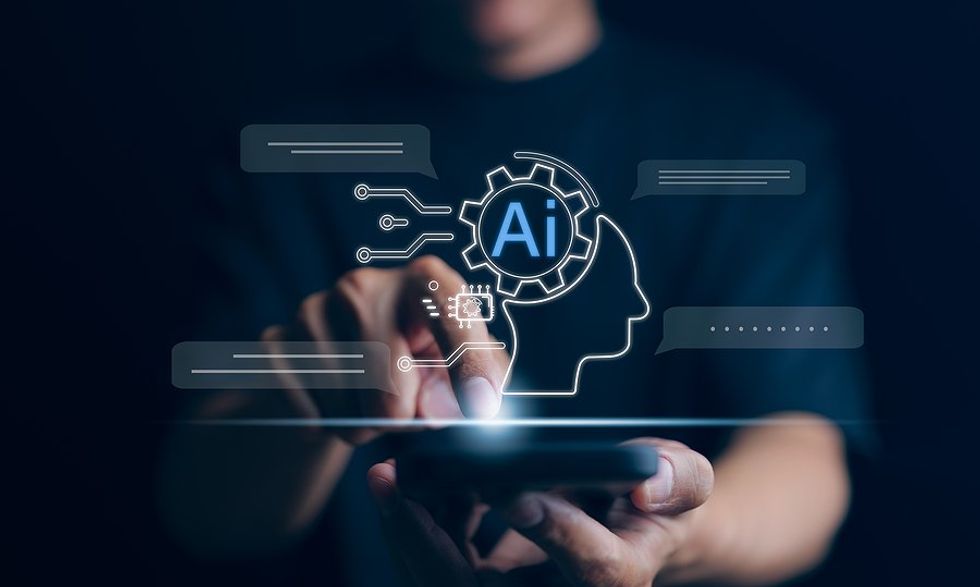Artificial intelligence (AI) is intelligence (such as learning, reasoning, and inferring information) demonstrated by computers that mimics human intelligence. In the workplace, it can be used to perform cognitive abilities and tasks with reduced human error and cost. But this is just the tip of the iceberg of the transformative potential of artificial intelligence for the future of work.
We recently asked our leading executives what they think AI means for the future of work.
Here are their responses…
Ana Smith, Leadership Development & Learning Strategist
In continuation of our exploration of artificial intelligence (AI) and its impact on the future of work, this aims to shed light on the potential drawbacks and challenges associated with the integration of AI in the workplace. While AI offers tremendous opportunities, it is essential to acknowledge and address the concerns that arise alongside its implementation. Let us delve into the cons of AI and foster a comprehensive understanding of its implications.
- Job Displacement and Transition: As AI technology advances, there is a legitimate concern regarding job displacement. Tasks and roles that can be automated may lead to workforce reduction or shifts in job requirements. Professionals in industries heavily affected by automation may need to navigate transitions and acquire new skills to adapt to changing job market demands. It is vital to implement effective reskilling and upskilling programs to support individuals in successfully transitioning to new roles.
- Ethical Considerations and Bias: AI systems rely on large amounts of data, and if this data carries inherent biases or reflects societal inequalities, it can perpetuate discriminatory outcomes. Algorithmic bias can impact hiring practices, decision-making processes, and access to opportunities. Ethical considerations surrounding AI, such as privacy concerns and data security, must be addressed to ensure fairness, transparency, and accountability in the workplace.
- Overreliance on AI and Lack of Human Judgment: While AI excels at processing vast amounts of data and making predictions, it may lack the ability to understand complex contexts and exercise human judgment. Overreliance on AI systems without human oversight can lead to errors, misinterpretations, or flawed decision-making. Maintaining a balance between AI automation and human expertise is crucial to mitigate risks and ensure the responsible use of AI technologies.
- Workforce Adaptability and Learning Curves: Implementing AI technologies often requires a learning curve and adaptation for the existing workforce. Not all employees may be technologically adept or comfortable with AI integration. Organizations must invest in comprehensive training programs and provide ongoing support to help employees navigate the changes effectively. Overcoming resistance to change and fostering a culture of continuous learning are essential for successful AI implementation.
- Job Satisfaction and Work-Life Balance: AI’s ability to automate certain tasks may inadvertently increase workloads and expectations for employees. As AI takes over repetitive and mundane tasks, professionals may find themselves handling more complex responsibilities, potentially leading to increased stress levels and a compromise in work-life balance. Organizations must proactively address these concerns to ensure that AI implementation enhances employee well-being and job satisfaction.
While artificial intelligence presents remarkable opportunities for the future of work, it is crucial to recognize and address the associated challenges. By acknowledging the potential drawbacks of AI, such as job displacement, bias, ethical considerations, and workforce adaptability, organizations can proactively navigate these concerns. Striking a balance between AI integration and human judgment is key to harnessing AI’s potential while safeguarding the well-being and success of the workforce.
Ana Smith helps people & organizations achieve their full talent potential by developing and co-creating people strategies and customized solutions, and turning them into impactful outcomes and collaborative relationships, using coaching as the “red thread.
Michael Willis, Sports Business Operations Executive
Image from Bigstock
I want to look at AI from the standpoint of leadership selling the concept to C-suite executives.
Selling Up:
1. Understanding C-Suites Destination
These executives are visionaries who look at things in the time and space of decades into the future. Their foundation is mission, vision, and purpose.
It would be best to build a narrative; be a good storyteller, a master at telling their story.
You must show them where they are now and where they want to go. The progress of everything in the middle will get their attention.
If Henry Ford had asked the public if he could help them with something to improve their lives, the day’s response might have been we’re good; all I need is a faster horse.
2. Articulate the Value
You might see the value in AI and all that it can bring to the sports world. But your task is to articulate what’s important to them and concerned about every day.
Tell them something that they are not aware of.
You need to understand the observable group behavior of the culture of the C-suites. The essence of a person’s culture is a group of behaviors that you can measure, see, and experience. So, the C-suite will have a culture associated with it.
And there are individual cultures that influence their behaviors and decisions. Still, then there’s the group culture that affects the group and, therefore, the individual’s decisions to have a unanimous decision to buy into what you’re recommending.
So that’s why it’s essential to understand how and what areas their culture influences.
3. Trust
What is the C-suite modus operandi concerning trusting? For them to trust your pitch on AI, they must trust it and you.
Once you have articulated the three steps in the order that I have laid out from their perspective, from their lens, you’re on your way.
Finally, you must evoke the right emotions. Emotions will have the final say. It’s not the idea they’re buying into—not the thing itself. It’s the meaning behind it that’s important to them.
Michael Willis has 18+ years of experience working with accounting & sports organizations and has managed P&Ls of $10M – $125M+ with budgets of $3M-$50M+. He worked for the NFL for 22 1/2 years, mainly with the game officials working on the financial/accounting side of the business.
Lisa Perry, Global Marketing Executive

Image from Bigstock
As a brand marketer, I cannot ignore the profound impact that rapid advancements in artificial intelligence (AI) have had on various industries, and my industry is certainly no exception. AI technology is revolutionizing how companies engage with their audiences, streamlining processes and making data-driven decisions. Here are four ways AI is changing the future of work in brand marketing and how businesses can leverage this transformative technology to gain a competitive edge:
Automating Routine & Repetitive Tasks
AI technology offers the potential to automate routine and repetitive tasks, freeing up valuable time for brand marketers to focus on strategic initiatives. Chatbots, for example, can handle customer inquiries, providing instant responses, personalized recommendations, and support around the clock, enhancing customer satisfaction and allowing marketers to allocate their time and energy towards creative endeavors and relationship-building efforts. Additionally, AI-powered tools can automate social media posting, content generation, and campaign optimization, increasing efficiency and productivity.
Enhanced Data Analytics & Consumer Insights
One of the most significant advantages of AI for brand marketers is its ability to process vast amounts of data and unlock valuable consumer insights. AI-powered analytics tools can analyze consumer behavior, preferences, and patterns, enabling marketers to create more targeted and personalized campaigns. By leveraging AI algorithms, marketers can segment their audience more effectively, tailor content, and optimize marketing strategies based on real-time feedback, resulting in higher engagement and conversion rates.
Predictive Analytics & Forecasting
AI’s analytical capabilities enable brand marketers to predict future trends and make data-driven decisions more accurately. By leveraging machine learning algorithms, marketers can analyze historical data to forecast market demands and consumer behavior and identify emerging opportunities. This empowers them to anticipate shifts in the market, refine marketing strategies, and optimize resource allocation. With AI-driven predictive analytics, brand marketers can stay ahead of the competition and adapt proactively to changing market dynamics.
Hyper-Personalization
AI empowers brand marketers to deliver hyper-personalized experiences to consumers. By leveraging AI algorithms and machine learning, marketers can analyze user data to understand individual preferences, purchase history, and behavior patterns. With this knowledge, brands can create highly targeted marketing campaigns, personalized product recommendations, and tailored messaging that resonates with each customer on a deeper level. This level of personalization fosters stronger customer relationships, boosts customer loyalty, and ultimately drives revenue growth.
Artificial intelligence is transforming the future of work in brand marketing, offering many opportunities to increase efficiency, improve customer engagement, and drive business growth.
Lisa Perry helps companies build leadership brands, driving loyal customers & delivering profitability. She does this through a process that builds brands consumers love. Her goal is to help companies develop, monetize, and grow their brands.
What do you think AI means for the future of work? Join the conversation inside Work It DAILY today.
From Your Site Articles
Related Articles Around the Web
This post is exclusively published on eduexpertisehub.com
Source link

